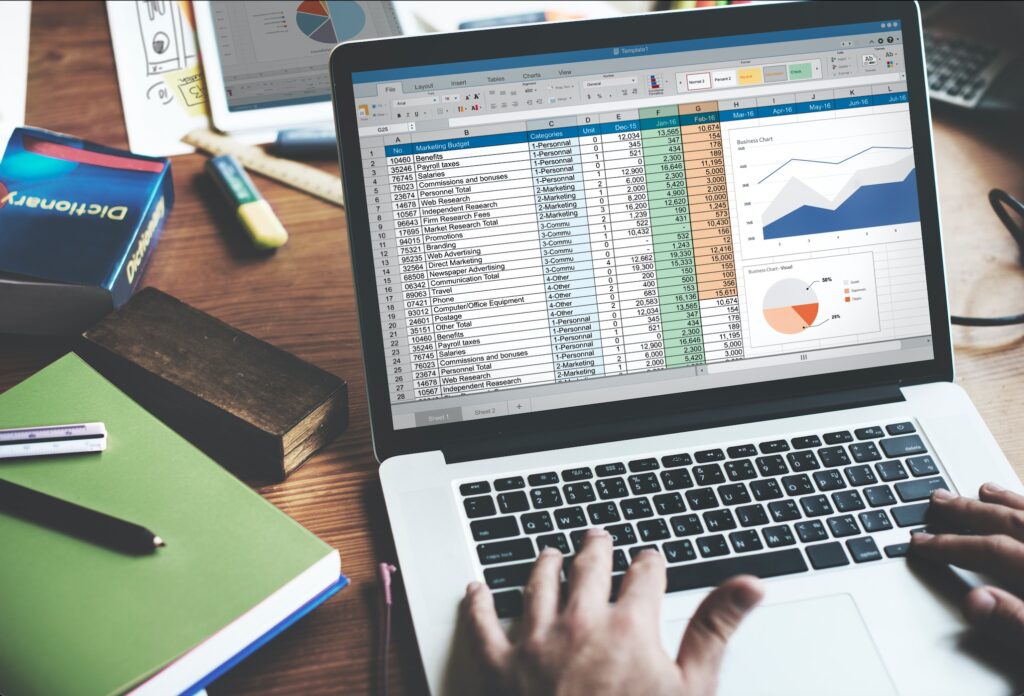Power BI vs Excel: Which One Is Better?
Microsoft is an indispensable name in the data analytics and visualization realm. With two powerful tools–Power BI and Excel–Microsoft is used by numerous enterprises seeking advanced analytics and visualization capabilities.
Microsoft Excel is a fundamental tool for data manipulation, while Power BI is a popular tool for data visualization. For enterprises generating vast amounts of data, extracting meaningful insights is crucial. These tools assist businesses in identifying patterns and making well-informed decisions.
Through this article, we will explore Power BI and Microsoft Excel to understand their features and differences. We will also examine the use cases for each tool to help users in selecting the appropriate tool for their data analytics requirements.

Source: Jakub Żerdzicki / unsplash
Understanding Data Models in Power BI and Excel
Before we dive into the tools, it’s essential to understand the concept of data models implemented in analytics.
Data models are visual representations that show the different pieces of data in a company and how they are connected to each other. They help organize the data and make it clear how each piece relates to the others.
Excel offers basic data modeling functionalities for analytics, including the creation of relationships between tables; however, it does not compare favorably with Power BI in terms of scalability and user experience. Excel also falls short when extracting data from multiple sources, despite supporting a variety of them.
Moreover, Excel is not suitable for creating sophisticated analytical solutions and is inefficient with complex data sets.
Power BI is built with a focus on data modeling and visualization. It offers a dedicated and scalable environment to extract and transform data. Users can import data from multiple sources and manipulate it using the Power Query editor. This tool also facilitates data cleaning, transformation, and other preparatory processes.
Another key highlight of Power BI’s data modeling capabilities is its ability to maintain relationships between tables. Users can easily create relationships and seamlessly join tables within Power BI. This is especially helpful when working with complex datasets and multiple databases.
Data Sources in Power BI and Excel
As mentioned above, both Power BI and Excel offer a wide array of data sources to import and analyze data. However, Power BI stands a notch above Excel in terms of data source availability.
Excel is useful when data is stored in spreadsheets or extracted from external sources such as databases, CSV, etc. Microsoft Excel is now integrated with Power Query to provide extensive support; however, the data source range is still limited compared to Power BI.
Without a doubt, Power BI wins here. This data visualization tool offers a wide array of data source options, including Salesforce, SQL, Azure, and Google Analytics. It allows users to utilize direct query connections to both cloud and on-premise databases, facilitating real-time updates.
Data Visualization in Power BI vs. Excel
Data visualization is an essential part of analytics. In Excel, users can create simple visualizations, including charts and graphs with in-built charting features.

Source: Rawpixel
It also provides different chart types to help build visually appealing data representations. However, these capabilities are limited compared to Power BI.
Power BI provides interactive dashboards and dynamic visualizations. It offers a rich set of visual options such as charts, maps, and custom visuals from the Power BI community. Users can also create dynamic dashboards with filtering options to explore different levels of detail.
Power BI also supports real-time data updates. By connecting live data sources, users can monitor changes in data and make informed decisions. This is especially useful for dynamic business environments.
With AI and machine learning capabilities, Power BI users can analyze future trends and predict patterns in data. Enterprises can thus extract market trends and mitigate risks to stay ahead of competitors.
Power BI vs Excel: Key Differences
Complex Data Set Management
Power BI has a major advantage over Excel in terms of handling complex datasets. Its in-memory processing engine helps analyze millions of rows of data and create interactive dashboards with deep insights.
Microsoft Excel is inefficient with large datasets and may have performance issues and long delays.
Data Modeling Proficiency
Power BI has dedicated data modeling capabilities to support relationships between tables. This makes it easier to create sophisticated reports and dashboards out of large data sets in a short time. Excel has limited modeling capabilities in contrast to Power BI.
Integration with Data Sources
Power BI integrates seamlessly with multiple data sources, including SAP, Salesforce, and SQL Connect. It also ensures smooth connectivity with other Microsoft services, such as Office 365 and Azure, allowing users to integrate existing data workflows.
Data sources are limited in Excel. It does allow users to visualize data from spreadsheets, CSV files, and extracted data from databases.
Real-time updates
With direct query capabilities, Power BI supports real-time updates in data. This ensures users can observe trends, uncover valuable insights, and collaborate with multiple stakeholders.
In the case of Excel, this feature is not available.
Familiarity and user experience
Power BI provides an intuitive interface with drag-and-drop functionality, enhancing user experience and better performance.
However, many users with less experience with analytics tools will prefer Excel over Power BI owing to its familiarity and wide adoption. Excel can help with basic analysis and reporting which can be enough for some based on their needs.
Choosing Between Power BI and Excel for Advanced Analytics and Data Visualization
When it comes to advanced analytics and data visualization capabilities, Power BI is the preferred option. It excels in deriving insights from complex datasets and creating interactive dashboards.
However, Excel is indispensable when it comes to tasks such as data manipulation and formula-based calculations. Due to its widespread usage, Excel is familiar to many users who might leverage the tool to create complex spreadsheets.
Moreover, its integration with Microsoft services, including Power Query, allows it to conduct data analytics operations to a certain degree, although performance and timing issues might still arise.
Conclusion
Users can select either Power BI or Excel depending on their specific analytics tasks, the complexity of the data, and the needs of their projects. Each tool has distinct strengths and limitations.
Power BI is ideal for sophisticated data analytics and visualization tasks. It offers interactive dashboards, real-time data updates, and robust data modeling capabilities, making it an excellent choice for enterprise use.
Additionally, Power BI provides superior scalability and performance relative to Excel. Nonetheless, Excel may surpass Power BI in terms of widespread use and familiarity among users.
Microsoft Power BI also ensures efficient integration with various data sources, which can lead to significant time savings over Excel.
Check out this video if you want to know more about Power BI vs Excel.
Connecting Power BI to Oracle Databases
Are you an Oracle user looking to connect Power BI with the Oracle database directly? Try BI Connector! We enable users to connect to the Oracle Fusion Analytics database via data models. This helps them to bring data from Oracle Fusion apps (ERP, SCM. HCM, and CX), OBIEE, OTBI, OAS, and OAC.
Discover how to streamline your data integration processes by clicking the banner below for more information.